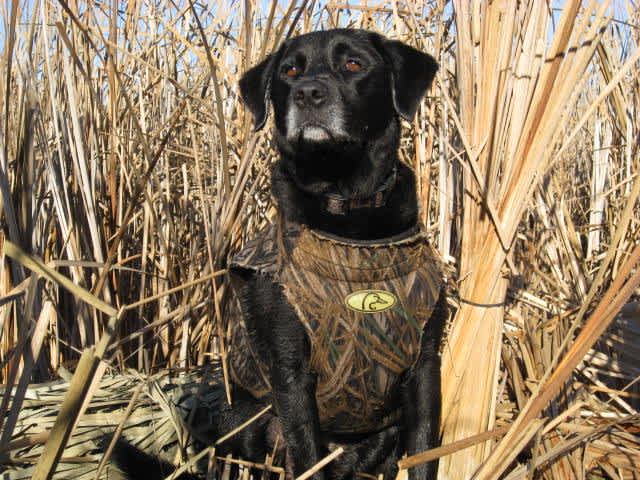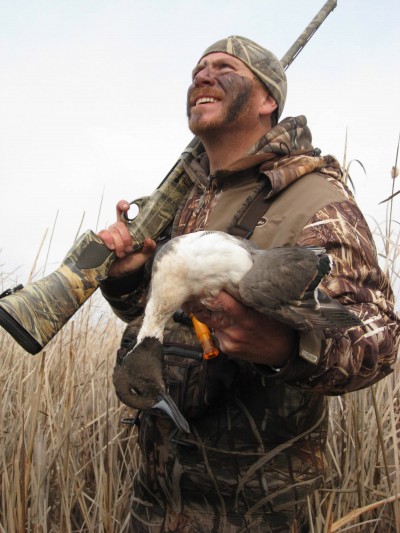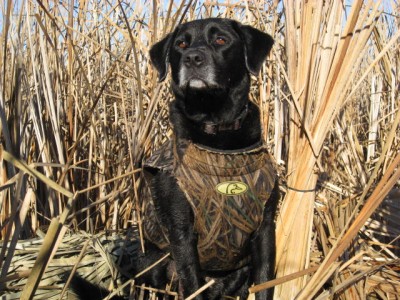Bitter-cold Waterfowling
OutdoorHub Contributors 11.13.13


Southeast Michigan lies in one of the busiest corridors for migrating waterfowl. Technically speaking, the waters of Lake St. Clair and western Lake Erie make up a large portion of a northern branch of the Mississippi Flyway, like an artery connecting to the main flow through the central United States. In addition, the Great Lakes themselves seem to contain another highway for ducks and geese, as they move across northern Michigan and southern Ontario, down the St. Clair river system, and into the fertile fields of Indiana and Ohio. In any case, this puts my corner of the state right in the path of a bunch of birds.
As summer transitions into fall, everything seems to signal the approaching season. Geese begin flying at daylight in search of fertile fields. Ducks begin to group in large numbers in the local marshes. A touch of green can be seen on the heads of drake mallards as they emerge from their eclipse plumage. The nights begin to cool a little more, and winds occasionally switch to the north.
The opener brings anticipation and, oftentimes, success to the waterfowlers of Michigan. Northern Michigan will begin in late September, further south, in my neck of the woods; duck season starts a little later. By Halloween, everyone is in full swing, with the major migration underway. One would think late October is the greatest calendar period of the year, but many veteran fowlers wait patiently for the big score that can only come once the last hand has been dealt.
Each year, I anticipate December duck hunting. While most hunters are burned out from the season, I’m just getting underway. Sure, the ducks are more educated and often less in number, but what awaits is often a set of circumstances that can predictably bring the best hunting of the year. Hunters must heed caution, though, as this is also the time when Mother Nature is the least forgiving.
Birds in the ice
The greatest hunts I’ve ever had on the Great Lakes occurred when a large portion of the water was frozen. While December freezes often push ducks out of refuges and feeding areas, including fields, the ducks that remain become very predictable. Waterfowl need water, every day, in order to feed and survive. And, because much of their habitat is frozen this time of year, the remaining open water often draws them in like a magnet.
In most circumstances, the easiest way to find open water this time of year is to search out areas with current. On the St. Clair system, this is fairly easy, as the major channel branches of the St. Clair River all contain substantial current. The same holds true with much of the lower Detroit River system, and other rivers entering this section of the Great Lakes. Current will be concentrated on the outside turns of the rivers and channels, and these areas are often the last to freeze. Areas where the wind blows into small portions of open water can also create an oasis for ducks. Windblown open areas are especially attractive to hunters, as they frequently stay open even in the nastiest conditions, and reduce the amount of time needed to continuously clear the hunting location of ice.
Large concentrations of waterfowl will often keep the water open themselves. This is a frequent occurrence with geese utilizing small ponds near feeding fields. The geese will pack into the pond overnight, and wait to fly until the warmest portions of the day. Their body heat and activity keeps the water open, and, when they leave, they’re not gone long. The geese will feed quickly, knowing that they must return to the pond prior to it freezing up at the end of the day. Geese in this pattern can often be hunted effectively, as they travel like clockwork. Ducks will also gather in massive groups overnight for this same purpose.

A few key aspects of hunting in icy conditions are worth mentioning. I’ve learned by trial and error that bad things often happen in these conditions, and have had to face quite a few hardships to learn the ropes. Regarding equipment, the greatest thing a waterfowler can do is to keep the boat and equipment warm overnight. Getting the rig in a heated garage, or at least covering the boat with a space heater beneath the tarp, will drastically reduce the number of immediate problems hunters will incur at setup. Frozen decoys are commonplace, as are boat boxes, gun case zippers, dog platforms, calls, and the like. Having everything dry and toasty to start is a huge step in the right direction.
Boats and motors must be carefully considered when hunting these extreme conditions. I run an air-cooled Mud Buddy surface drive motor, both for its ability to access skinny water and its incredible performance in ice. I’ve used my rig several times in ice thick enough to walk on, and was able to break into remote hunting locations. With no water pump or water-cooling features, the motor will run regardless of temperature. I ensure a fully charged battery the day before, and also keep the motor warm when possible to allow oil to flow correctly. In addition, I avoid storing the motor in the upright “locked” position when I exit the boat to hunt; more than once the motor froze solid that way and led to a great deal of concern after dark. The motor also doubles as an incredible icebreaker to get a hole started at the hunting location.
Once a location has been chosen, and the rig is able to gain access, a few key steps will help hunters fill their bag. First off, never select a location where the wind is blowing ice into the hole, if possible. This will lead to a daylong headache, and is not worth the trouble. Select an area where any wind will blow the broken ice chunks away from the blind. Also, pay special attention to remaining concealed. Late season ducks and geese are very savvy, and will spot a hunter much more readily than in October. Oftentimes camouflage other than wetland basics must be considered, like white or snow camo apparel. Also, it’s better to be hidden well and further from the hole than sticking out and in short shooting range. Longer shots are a fact of life when hunting in the ice; so choose proper ammunition, like size 2 and up. Ducks and geese both have tough, full winter plumage this time of year, so hit them with big shot sizes.
Keep everyone warm
Consider the conditions when choosing a hunting location, and, if using a retriever, be sure to consider him as much or more than yourself. In order to keep a canine warm in extreme circumstances, the dog should never remain in the water long. Attempt to hunt from dry ground with a major windbreak, like thick marsh grass. Utilize a platform if dry ground is not available, and always hunt with a thick vest on your dog in these conditions. I go a step further and carry a custom-made dog cover insulated with heavy neoprene to get my lab fully out of the wind and cold.
When preparation meets opportunity, and birds begin to show up, late-season calling tactics must be considered. In the case of geese, most veterans recommend calling very little during the later portions of the season, as the birds have been over-called most of the year. For ducks, its now important to use more greeting calls than anything, along with overlooked options like a drake whistle. Feeding calls and chatter are a waste of time, as the small pockets of open water contain little if any food. It’s time to just sound like a duck, calling for a friend. Mallard drakes are now pairing up, and very susceptible to a lonesome hen.
Waterfowlers dream of circumstances when their quarry becomes predictable, and late season brings a set of circumstances that often lead to such conditions. Special preparation must be considered to avoid having the best days quickly ruined by the elements. Veterans of hunting in the ice know: the greatest days are often the last.

